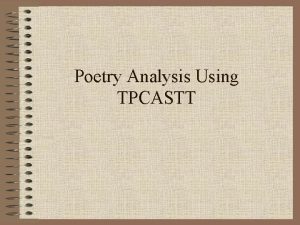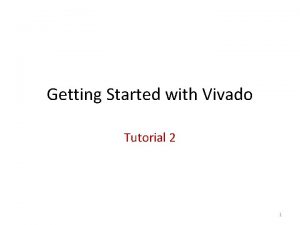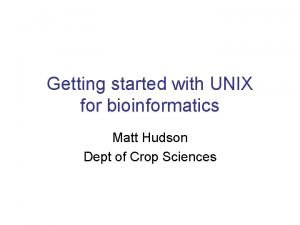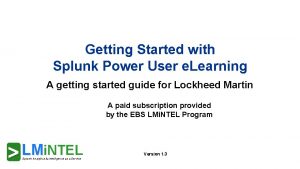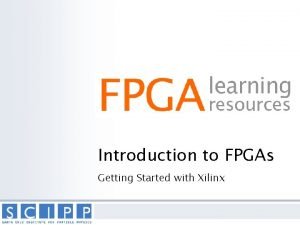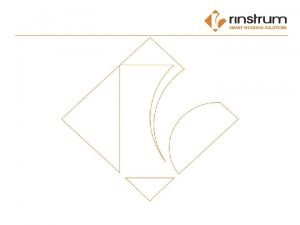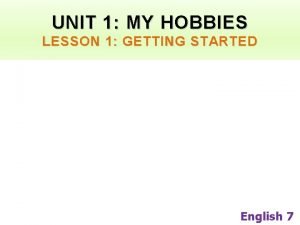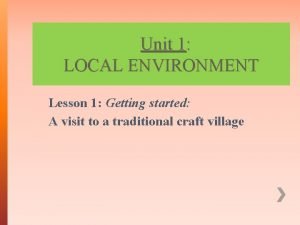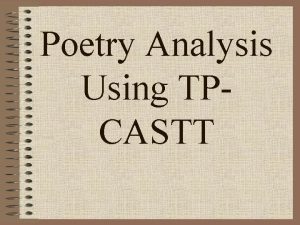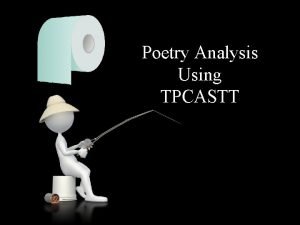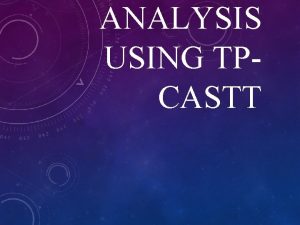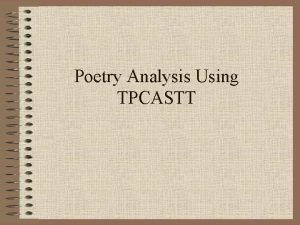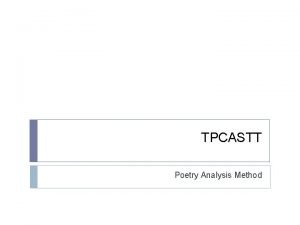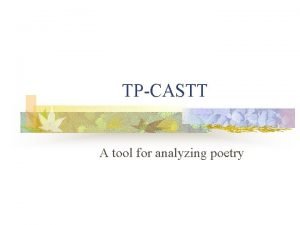Poetry Analysis Using TPCASTT Getting Started This is











- Slides: 11

Poetry Analysis Using TPCASTT

Getting Started… • This is a process to help you organize your analysis of poetry. • As we learn the vocabulary, we must also learn how to put it into practice!

T is for TITLE • Analyze the title first. • What do you predict this poem will be about? • Write down your predictions. • We will reflect on the title again after we have read the poem. • The next step is often omitted, but it is the most important!!!!

READ THE POEM!!!!

P is for PARAPHRASE • Paraphrasing is putting something in your own words. • After reading the poem, rewrite it in your own words. • This may be three sentences or a page, depending on the particular poem. • Remember, paraphrasing requires annotation. • Paraphrasing is a type of summary. Summaries help us find main idea and theme.

C is for CONNOTATION • Analyze the figures of speech and sound effects of the poem. • These elements add to the meaning. • Examine the poem for meaning beyond the literal. • Look for figurative language, imagery, and sound elements.

A is for ATTITUDE • Tone is the attitude of the speaker toward the subject of the poem. • Decide if the poem is positive or negative, formal or informal, serious or humorous. • Does the tone change within the poem?

S is for SHIFT • If there is a change in… – Time – Mood (atmosphere) – Speaker – Punctuation This should always be noted as this will also affect the meaning.

T is for TITLE (again) • At this time, you should reconsider the title. • Were you right in your predictions? • What other meanings can you think of for the title in light of your analysis? • Remember, you are trying to interpret the poem on a deeper level.

T is for THEME • As you already know, theme is the general insight into life conveyed by the author through his/her work. • It is a message, moral, or belief. • It states something that is true to life about the human condition. • Themes are not one word. They must be a sentence about the subject of the poem.

How do I find the THEME? • Look at the other parts of TPCASTT. • Decide what topics are being discussed. Which are major subjects and which are minor? • What insight is the poem working together to convey? • What is the poet trying to say about life? • Use the following sentence skeletons to help you: • The author believes… (finish the sentence). • I learned… (finish the sentence)

